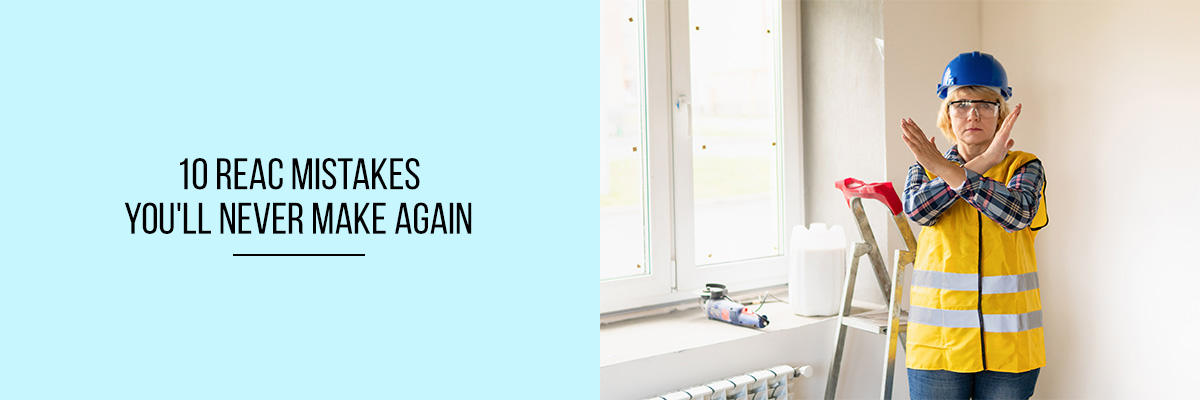Housing inspections can be time-consuming and quite hectic. This could really disturb you if you have a busy schedule. You might end up investing and spending resources if not taken the necessary steps before the inspection.
Before the HUD REAC (Real Estate Assessment Center) inspector visits your property for inspection, a few precautionary measures have to be taken to avoid common mistakes. Even a low score means more frequent visits of REAC inspectors.



10 REAC mistakes you’ll never make again
There is a list of common mistakes generally made during REAC inspections. Since inspectors report the tiniest of details which could result in low score, here are 10 REAC mistakes you should avoid:
1. Damaged or broken walls
Properly built walls without any damage ensure the safety and security of your house, and the people living inside. Make sure there are no missing pieces or holes in the walls, and definitely no spalling. Damaged walls are red flags during REAC inspections which could result in your report. This includes peeling and damaged paint and holes on the wall.
2. Broken doors and locks
Like walls, doors and locks are safety measures of the house. A proper functional door and lock are a necessity according to HUD REAC standards. REAC inspectors will thoroughly inspect each door and lock around the house to make sure they are in proper working condition. If found any deficiency, it would be mentioned in the report.
3. Do something about damaged sockets and open wires
Wiring systems are crucial in REAC inspections. REAC inspectors will check every wiring connection to ensure there are no breakage or bare circuits. This process could be lengthier and lead to other checkboxes if any open wires are found. Make sure there are no Missing / Broken Cover Plates (Outlets / Switches).
4. Pipelines and gas system
The leakage of pipelines and gas systems can be life-threatening. If these pipelines are not found in their standard conditions, it would definitely raise a red flag for REAC inspectors. Therefore, it’s important to make sure your systems are followed by the protocol and no gaps have remained.
5. Broken or open windows
Proper windows fall under the housing security standards of HUD. Broken windows or locks of windows can affect your report. Ground floor and first-floor windows must have locks.
6. Kitchen items
Yes, you heard it right. REAC inspectors check the proper functionality and condition of in-built kitchen cabinets and units. Any missing, damaged or inoperable kitchen items will make it to the report.
7. Sanitary and health aspects
Apart from the construction and other systems, REAC inspectors check for the sanitary and health prospects of the house. They check for infestations too.
8. Emergency measures
We can’t overlook the emergency measures of the house, and if it’s functional. Emergency exit blockage or unusable first aid is not acceptable. In your REAC inspections and the lives of people on your property, it’s important to keep the precautionary emergency measures and ensure it’s functional.
9. Smoke detectors and fire extinguishers
We might not be able to test smoke detectors and fire extinguishers, but keeping them as per the required standards could save a life, and your time with REAC inspections.
10. Bathroom items
REAC inspections include checking for any broken shower tabs, faucets, and pipes. To ensure that there is proper water flow and no leakage.
Final Words
REAC inspections are time-consuming, but taking precautionary measures can help speed the process. Although REAC inspections are done thoroughly, proper functional homes make the process smooth.


